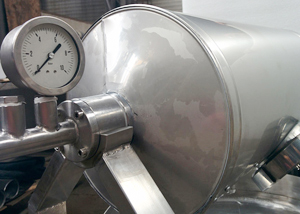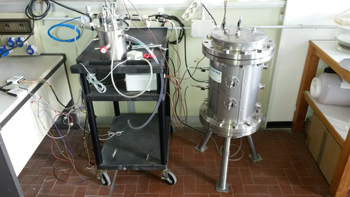Project
The project will contribute to the increase in the share of energy produced from renewable sources in Tuscany and will be applicable to the many landfills by providing further technology for achieving the 17% renewable energy target for 2020.
The implementation of the landfill enrichment facility will ensure:
- Greater energy efficiency;
- Original and sustainable use of incinerator or foundry waste;
- Production of energy from renewable sources.
BI.R. Responds to the objectives set out in the RDP 2011-2015 programming document for the Energy Efficiency Technology District of Renewable Energy as:
- is an application research project in collaboration with search entities;
- Facilitate a process of industrial innovation by making available the described plant;
- Creates aggregations and develops professional skills in the field of energy efficiency and renewable energies.
Basic Idea
 The BI.R project is aimed at the research and development of an innovative line of facilities for enriching the methane component in landfill biogas to be used efficiently (or effectively) in internal combustion engines for the production of electricity from sources “renewable”.
The BI.R project is aimed at the research and development of an innovative line of facilities for enriching the methane component in landfill biogas to be used efficiently (or effectively) in internal combustion engines for the production of electricity from sources “renewable”.
The idea arises from the finding that biogas from anaerobic biodegradable biodegradable biodegradation (in landfills or in industrial anaerobic digestion reactors) is generally composed of about 50-60% by volume of methane and by 50-40% In volume by carbon dioxide, with the presence of sulfuric acid in concentrations ranging from 50 to 1000 ppm. With these characteristics, after the possible reduction of the presence of sulfuric acid, biogas is commonly used to power internal combustion engines for cogeneration of electricity and heat. When, however, the methane content of biogas is too low – generally less than 39% in vol. – it is no longer possible to power it to internal combustion engines.
In order to use biogas with these characteristics in internal combustion engines it is therefore necessary to enrich the methane content by removing one of the major dilution compounds represented by carbon dioxide. The innovative element that aims to achieve the enrichment of methane in biogas consists in the use of carbon dioxide chemical adsorption on calcium-rich solid residues – for example, waste-to-combustion waste, scrap of steel Or other suitable residues.
Art status
 The application areas covered by the project are essentially two aspects of the treatment and disposal of solid residues: landfill biogas and the disposal / treatment of certain types of industrial solid residues.
The application areas covered by the project are essentially two aspects of the treatment and disposal of solid residues: landfill biogas and the disposal / treatment of certain types of industrial solid residues.
At present, state of the art for the treatment of a biogas that does not have the characteristics suitable for combustion in engines, however, requires the landfill obligation to cover it and then burn it in torch in the absence of energy recovery with the end To transform the methane present in carbon dioxide (and thus reduce the impact on the environment in terms of greenhouse effect).
The method with which it is proposed to treat the biogas mentioned above is based on an innovative process based on the chemical process of carbonation of solid residues. Both aspects of the proposal are innovative in relation to the state of the art since there are no existing commercial or demonstration technologies or facilities that apply the concept of carbonation of industrial residues to the treatment of landfill biogas for the purposes of the project.
The proposed process for the treatment of biogas accelerated carbonation of solid residues is a process that consists of the exothermic reaction of carbon dioxide with the calcium and magnesium compounds contained in the residues of some industrial processes (combustion of coal, waste, metallurgy. )
The purpose of this proposal is to exploit the simplicity of the carbonation process of industrial solid waste for the treatment of landfill biogas, but with the aim of removing part of the diluent CO2 using a lesser amount of solid residues.
